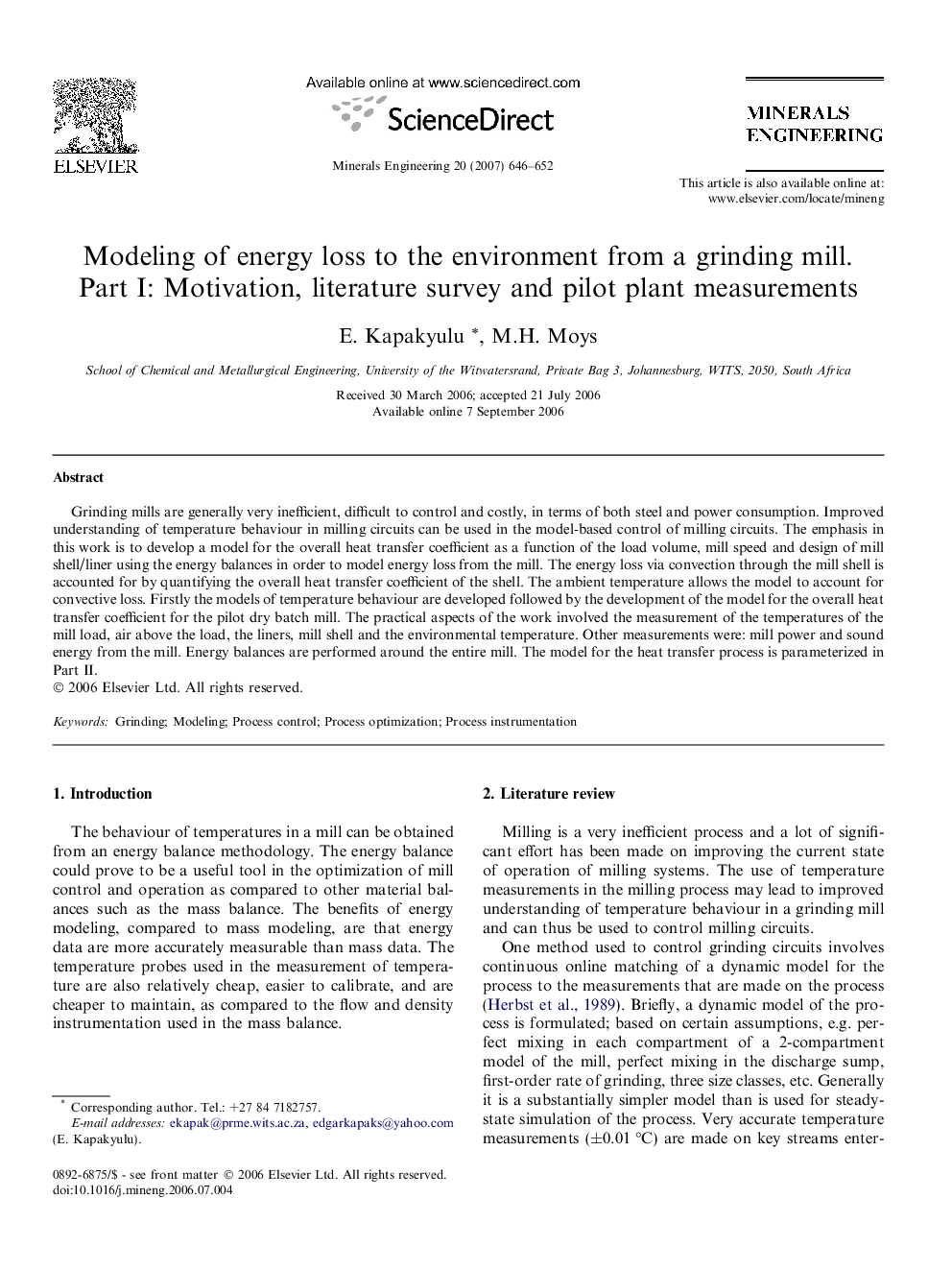| Article ID | Journal | Published Year | Pages | File Type |
|---|---|---|---|---|
| 234540 | Minerals Engineering | 2007 | 7 Pages |
Grinding mills are generally very inefficient, difficult to control and costly, in terms of both steel and power consumption. Improved understanding of temperature behaviour in milling circuits can be used in the model-based control of milling circuits. The emphasis in this work is to develop a model for the overall heat transfer coefficient as a function of the load volume, mill speed and design of mill shell/liner using the energy balances in order to model energy loss from the mill. The energy loss via convection through the mill shell is accounted for by quantifying the overall heat transfer coefficient of the shell. The ambient temperature allows the model to account for convective loss. Firstly the models of temperature behaviour are developed followed by the development of the model for the overall heat transfer coefficient for the pilot dry batch mill. The practical aspects of the work involved the measurement of the temperatures of the mill load, air above the load, the liners, mill shell and the environmental temperature. Other measurements were: mill power and sound energy from the mill. Energy balances are performed around the entire mill. The model for the heat transfer process is parameterized in Part II.
